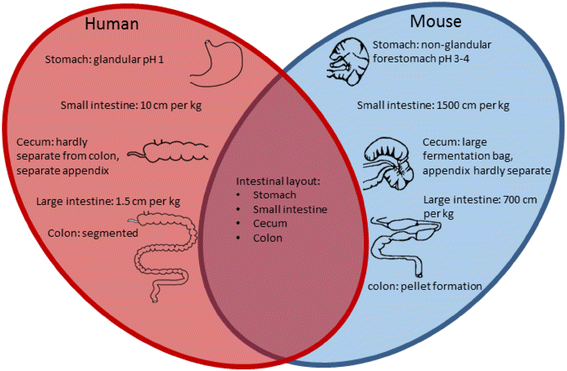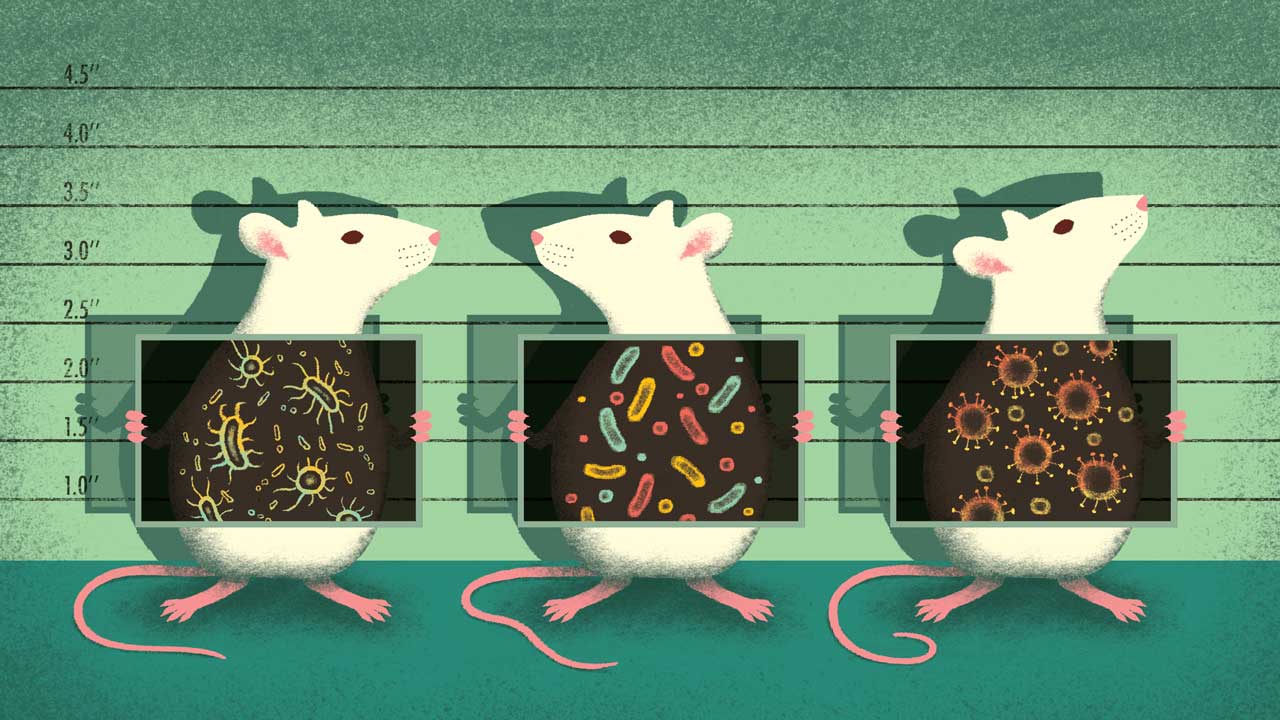Beyond the Cheese Maze: Significance of Mice in Research
Studying human tissues, such as blood or tumors, in a petri dish has provided scientists with valuable insights into human physiology and disease. However, to gain a complete understanding of how a disease works, researchers require a living model system that can substitute for humans. On the other hand, it would also be too dangerous to test compounds and drugs on human without first knowing what the possible effects and risks would be.

Humans and rodents may not look alike, but the researchers identified that mice share many biological and genetic similarities with humans. A study notes that humans and mice have 90% genomic similarities. By utilizing mice as a model organism, researchers can easily monitor and analyze the genetic differences that cause variations in diseases. These discoveries can then be applied to improve drug development and create more precise clinical trials.
According to Justice et al. (2011), The mouse is the only mammal that provides such a rich resource of genetic diversity coupled with the potential for extensive genome manipulation, and is therefore a powerful application for modelling human disease.”
Rodents are crucial to the development of new medical breakthroughs, from the formulation of innovative cancer drugs to the testing of dietary supplements.
Why do scientists use specifically like to use rodents?
Mice are the most widely used animal model in both medical and scientific research. Mice and rats are relied upon by scientists and researchers for numerous reasons. They can help researchers gain clinical insight due to:
Genetic similarity
Due to the shared genetic features between the mice and humans, scientists are able to manipulate the mouse genome, simulate specific diseases, evaluate novel drugs, and explore the genetics of various diseases prior to conducting studies on human subjects.

Despite the presence of significant differences between the mouse and human genomes, these dissimilarities are not significant enough to negate the importance of mice in the study of human diseases.
Physiological similarity
Physiologically, mice share many similarities with humans despite being approximately 3000 times smaller. The organ systems of mice closely resemble those of humans in shape, structure, and biology.

Mice undergo development in a manner similar to humans, resulting in similar organ systems, such as the heart, lungs, brain, and kidneys, as well as comparable digestive, circulatory, reproductive, and nervous systems. Although differences do exist, mice respond similarly to humans when they are sick or undergo treatment.
Economic importance
Mice and rats are comparatively cost-effective and can be procured in sizable quantities from commercial breeders who specialize in producing rodents for research purposes. Additionally, these rodents are typically gentle and submissive, making them easy for researchers to handle, although some species of mice and rats may be more challenging to restrain than others. They also reproduce quickly and have a short lifespan of two to three years, so several generations of mice can be observed in a relatively short period of time.
Human disease research
Scientists rely extensively on mouse models to understand the underlying mechanisms of several diseases. As such, it is easier for scientists to explore the efficacy of candidate drugs and predict human responses using mouse models.
Mice have been used extensively in cancer research. Because cancer is a disease of the genes, mice have been used to study the effects of specific genetic mutations on tumor development and progression. Researchers have also used mice to test new cancer drugs and to develop new cancer treatments. Mice have also been used to study the immune system and to develop new treatments for autoimmune diseases such as rheumatoid arthritis and multiple sclerosis.

Mice have also been used in research on the brain and nervous system. Researchers have used mice to study the effects of drugs on behavior and to develop new treatments for neurological disorders such as Alzheimer’s disease and Parkinson’s disease. Mice have also been used to study the genetics of autism and to develop new treatments for this disorder.
In addition to disease research, mice have also been used to study basic biological processes such as embryonic development and aging. Researchers have used mice to study the development of the nervous system, the immune system, and the cardiovascular system, among others. Mice have also been used to study the effects of diet and exercise on health and longevity.
Some examples of human disorders and diseases for which mice and rats are used as models include:
Cancer: Mice and rats are used as models for studying various types of cancer, including breast cancer, leukemia, and lung cancer. Researchers study the animals to understand the development, progression, and treatment of cancer.
Seizures: They used as models for epilepsy and seizures, which are neurological disorders. Researchers study the animals to better understand the underlying causes of these conditions and to develop new treatments.
Diabetes: Rodents are used as models for studying diabetes, a metabolic disorder that affects the body’s ability to regulate blood sugar. Researchers study the animals to better understand the disease and to develop new treatments.
Heart disease: Mice and rats are used as models for studying various heart diseases, including arrhythmias, heart failure, and heart attacks. Researchers study the animals to understand the underlying causes of heart disease and to develop new treatments.
HIV and AIDS: Animals are used as models for studying HIV and AIDS, which are viral infections that affect the immune system. Researchers study the animals to better understand the disease and to develop new treatments.
Alzheimer’s disease: Mice and rats are used as models for studying Alzheimer’s disease, a neurodegenerative disorder that affects memory and cognitive function. Researchers study the animals to understand the underlying causes of the disease and to develop new treatments.
Parkinson’s disease: They are used as models for studying Parkinson’s disease, a neurodegenerative disorder that affects movement and coordination. Researchers study the animals to understand the underlying causes of the disease and to develop new treatments.
Respiratory problems: They are used as models for studying various respiratory problems, including asthma, chronic obstructive pulmonary disease (COPD), and cystic fibrosis. Researchers study the animals to understand the underlying causes of these conditions and to develop new treatments.
Muscular dystrophy: They are used as models for studying muscular dystrophy, a group of genetic disorders that cause progressive muscle weakness and wasting. Researchers study the animals to understand the underlying causes of the disease and to develop new treatments.
Spinal cord injuries: They also used as models for studying spinal cord injuries, which can cause paralysis and other serious health problems. Researchers study the animals to understand the underlying causes of spinal cord injuries and to develop new treatments.
In addition to the aforementioned examples, mice and rats are used as experimental models in various other studies as well.
Is Mice Irreplaceable in biomedical researches?
Despite the many advantages of using mice in research, there are also some limitations to this approach. Although mice share many characteristics with humans, there are also significant differences in their biology and physiology. This means that the results of mouse studies may not always translate directly to humans.
Another limitation of using mice in research is the fact that they are relatively small animals. This means that it can be challenging to study some aspects of human biology and disease in mice. For example, it can be difficult to study the effects of obesity and diabetes in mice because they have different metabolic rates than humans.

Despite these limitations, the use of mice in scientific research has played a critical role in advancing the understanding of human biology and disease. Without the ability to study specific genes and manipulate their expression, it would be challenging to develop new treatments for genetic disorders such as cystic fibrosis and Huntington’s disease. Similarly, without the ability to study cancer in mice, it would be challenging to develop new cancer treatments.
Researchers constantly seek alternative methods to animal testing in clinical research; however, mice remain an indispensable experimental model for studying human diseases that cannot be substituted at present.
Is it ethical to use animals, such as mice, in scientific research?
The use of animals in scientific research has been a controversial topic for many years. While some argue that it is morally wrong to use animals solely for human benefit, others believe that animal research is necessary for understanding health and disease and developing new treatments.
However, to minimize the potential harm to animals used in laboratories, researchers are required to follow a set of principles known as the ‘three Rs.’ These principles are aimed at reducing the negative impact on animals while still allowing for valuable research to be conducted. These principles are:
Replace: Whenever possible, experiments using animals should be replaced with alternative techniques such as cell culture, computer modeling, or human volunteers.
Reduce: The number of animals used in experiments should be minimized by improving experimental techniques and sharing information with other researchers to avoid duplicating experiments.
Refine: The way animals are cared for should be refined to minimize stress and pain, using less invasive techniques where possible and improving medical care and living conditions.
While animal research continues to be a topic of debate, regulations are in place to ensure that studies are carried out humanely and that the use of animals is minimized whenever possible. By implementing the three Rs, researchers can reduce the impact of animal experimentation and ensure that animals are treated with care and respect during the research operation.
In a nutshell, the use of mice in scientific research has become an essential tool for advancing our understanding of human biology and disease. Mice share many genetic, physiological, and behavioral characteristics with humans, making them an ideal model organism for studying human disease. While there are some limitations to using mice in research, the advantages of this approach have far outweighed the drawbacks, making the mouse an indispensable tool in scientific inquiry.
